-
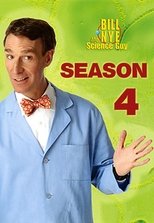
-
-
Bill Nye The Science Guy : Season 4
-
Air date: 03 Nov '95 - 20 episodesBill Nye the Science Guy is an educational television program that originally aired from September 10, 1993 to June 20, 1998, hosted by William "Bill" Nye and produced by Buena Vista Television. The show aired on PBS Kids and was also syndicated to local stations. Each of the 100 episodes aims to teach a specific topic in science to a preteen audience. The show is frequently used in schools as an education medium, and it still airs on some PBS stations for this reason. Created by comedian Ross Shafer and based on sketches on KING-TV's sketch program Almost Live!, Bill Nye the Science Guy was produced by Disney Educational Productions and KCTS-TV of Seattle. Bill Nye the Science Guy won nineteen Emmy Awards during its run.
-
-
List of Episodes (20)
-
Bill Nye The Science Guy (1993)
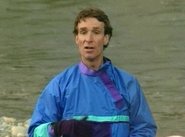
-
1. Rivers & Streams
03 Nov '95Water is massive; rivers are powerful. As rivers flow downhill, they wear away rock and soil to form canyons or winding curves in the land, called meanders. Sometimes rivers fill and overflow their banks. Rivers with too much water create floods that can carry away plants, trees, buildings and boulders. Rivers and streams support most of the ecosystems on land.
-
Bill Nye The Science Guy (1993)

-
2. Nutrition
10 Nov '95
-
Bill Nye The Science Guy (1993)

-
3. Marine Mammals
17 Nov '95
-
Bill Nye The Science Guy (1993)
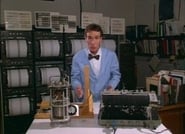
-
4. Earthquakes
24 Nov '95
-
Bill Nye The Science Guy (1993)

-
5. NTV Top 11 Video Countdown
01 Dec '95
-
Bill Nye The Science Guy (1993)
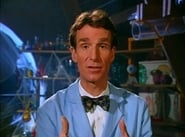
-
6. Spiders
05 Jan '96
-
Bill Nye The Science Guy (1993)
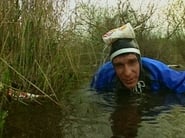
-
7. Pollution Solutions
12 Jan '96Water is massive; rivers are powerful. As rivers flow downhill, they wear away rock and soil to form canyons or winding curves in the land, called meanders. Sometimes rivers fill and overflow their banks. Rivers with too much water create floods that can carry away plants, trees, buildings and boulders. Rivers and streams support most of the ecosystems on land.
-
Bill Nye The Science Guy (1993)

-
8. Probability
19 Jan '96
-
Bill Nye The Science Guy (1993)

-
9. Pseudoscience
26 Jan '96People once thought that world was flat or nearly flat. It was considered a bit crazy to think of it as a big ball. But it is. You can prove it. One of the big ideas in science is that ideas can be tested. Scientists test claims. If one scientist claims that she or he can fill a balloon with invisible gas using vinegar and baking soda, other scientists can try it and see if they get the same result. Sometimes ideas are wild, extraordinary. And, the claims that go with these way-out ideas are
-
Bill Nye The Science Guy (1993)
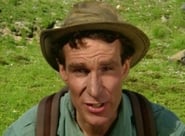
-
10. Flowers
27 Jan '96
-
Bill Nye The Science Guy (1993)
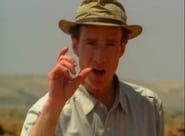
-
11. Archeology
28 Jan '96Join Bill Nye as he counts down the hits from the Soundtracks of Science. Along with the music, Bill does a few new experiments on the lab bench. You’ll see the grunge band Nyevana’s classic “Air Pressure,” Momentisey’s “The Faster You Push Me,” and divas En Lobe’s “Whatta Brain.” There’s even a special appearance by Mudhoney, a real band from Seattle. But if you want to know who’s the number one artist from Not That Bad Records, you’ll have to tune in.
-
Bill Nye The Science Guy (1993)

-
12. Deserts
29 Jan '96
-
Bill Nye The Science Guy (1993)

-
13. Amphibians
30 Jan '96Dirty water, land, and air are a result of pollution. People are the only animals on Earth that make pollution. Garbage, burning fuel, chemicals, sewage, oil, and pesticides are all human-made things that make the Earth’s atmosphere, water, and soil unclean. Humans are even leaving trash in space, such as broken satellites, pieces of metal, paint from rocket skin, and even cameras and toothbrushes. Much of the junk people make and leave behind hurts plants, animals, you and me.
-
Bill Nye The Science Guy (1993)

-
14. Volcanoes
31 Jan '96Volcanoes are mountains made from molten rock. The Earth’s crust is divided into big slabs, called plates, which are slowly moving all the time. The plates are floating on the Earth’s mantle, a layer of gooey hot rock that flows like maple syrup. Some places in the mantle, the rock gets very hot and nearly liquid. It’s called magma. Sometimes the magma reaches the Earth’s surface and forms a volcano.
-
Bill Nye The Science Guy (1993)

-
15. Invertebrates
07 Feb '96People once thought that world was flat or nearly flat. It was considered a bit crazy to think of it as a big ball. But it is. You can prove it. One of the big ideas in science is that ideas can be tested. Scientists test claims. If one scientist claims that she or he can fill a balloon with invisible gas using vinegar and baking soda, other scientists can try it and see if they get the same result. Sometimes ideas are wild, extraordinary. And, the claims that go with these way-out ideas are
-
Bill Nye The Science Guy (1993)
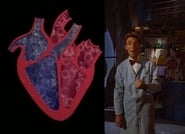
-
16. Heart
14 Feb '96Your heart pumps your blood around your body, all hours, every day of the week, to keep you alive. Your heart is about the size of your fist, and it’s made of special muscle called “cardiac” (KAR-dee-ak) muscle. Cardiac muscle lets your heart keep the beat, it can also speed up or slow down, depending on what your body needs. Your heart works like an automatic pump – it squeezes, or contracts, and un-squeezes, or relaxes, to push blood through the four different sections of your heart.
-
Bill Nye The Science Guy (1993)

-
17. Inventions
21 Feb '96Archaeologists are kind of like detectives. They’re scientists who snoop through old or ancient people’s things to find out what life was like thousands of years ago. Archaeologists find ancient cities, tombs, and temples by taking aerial photographs of Earth, by reading old documents, or by just looking at the shape of the land. When they think they’ve found a site, the archaeologists pick up a shovel and start digging. When archaeologists get close to an object, they dig very carefully.
-
Bill Nye The Science Guy (1993)

-
18. Computers
25 Apr '96About 20% of the Earth is a desert. Deserts are places that get very little precipitation (rain or snow) each year, and that makes them extremely dry. Deserts cover big areas of land. The biggest desert, the Sahara, extends from North Africa to Southwest Asia and is 13 times the size of Texas. Some parts of the Sahara get as little as 2 millimeters (0.08 inches) of water a year.
-
Bill Nye The Science Guy (1993)

-
19. Fossils
05 Sep '97Most dead animals and plants break up, get decomposed, and become part of the soil, but some turn into fossils. A fossil forms when a plant or animal dies, and gets buried. If conditions are right, water gets into the fossil bed, and chemical reactions preserve the impressions for thousands or millions of years. There are different types of fossils — imprints of animals, black carbon outlines, hardened bones, or actual animals and plants that have been trapped in ice or hardened tree sap.
-
Bill Nye The Science Guy (1993)

-
20. Time
12 Sep '97Time affects every living thing on Earth. Trees shed their leaves. Some animals only come out at night. There are even insects that only emerge every 17 years. Days, hours, minutes, and seconds – all of these were invented by humans. Humans came up with these units of time to organize their lives and to study the world. One of the first ways humans told time was by noticing the difference between daytime and nighttime. Humans use the Earth revolving around the Sun to divide time into years and
-



























